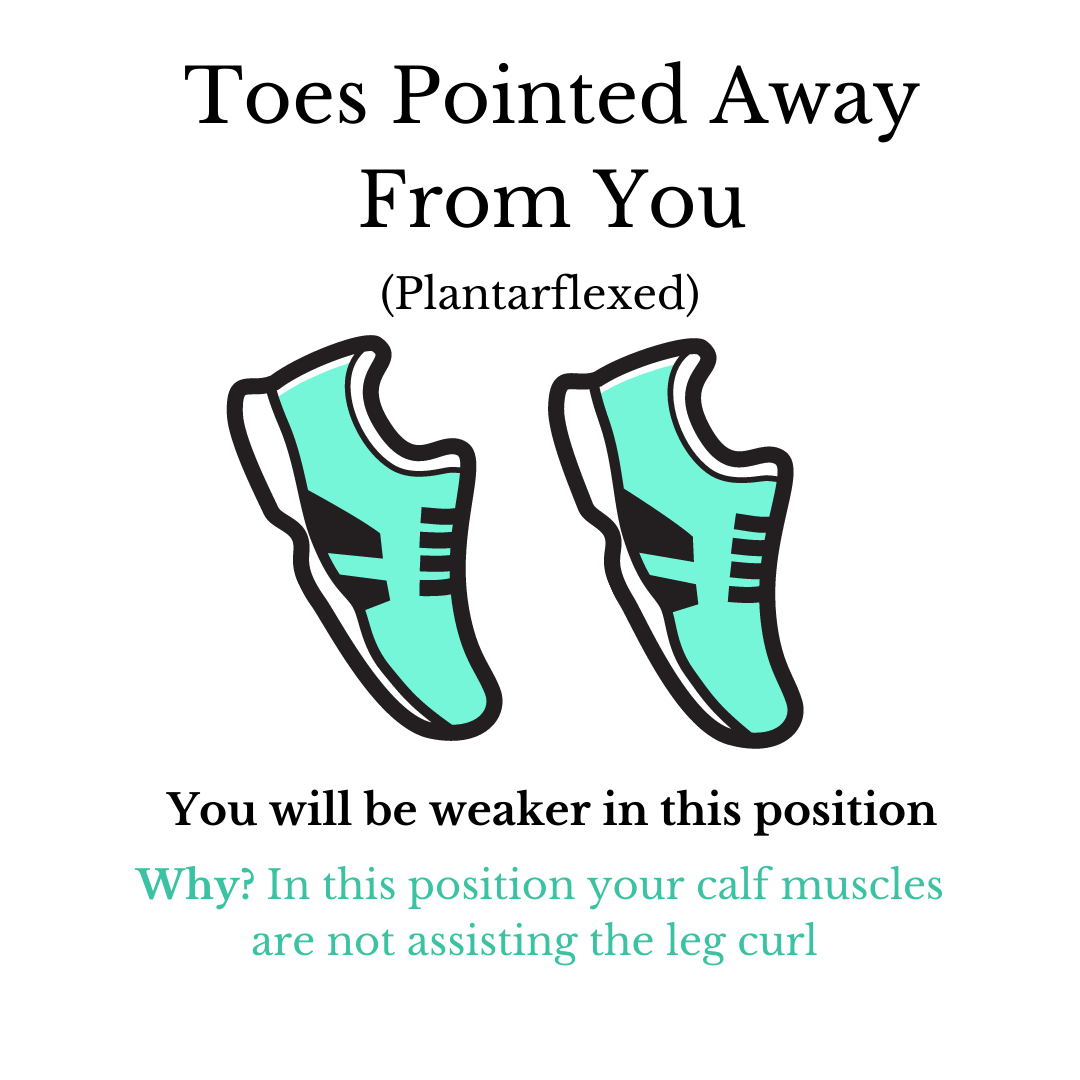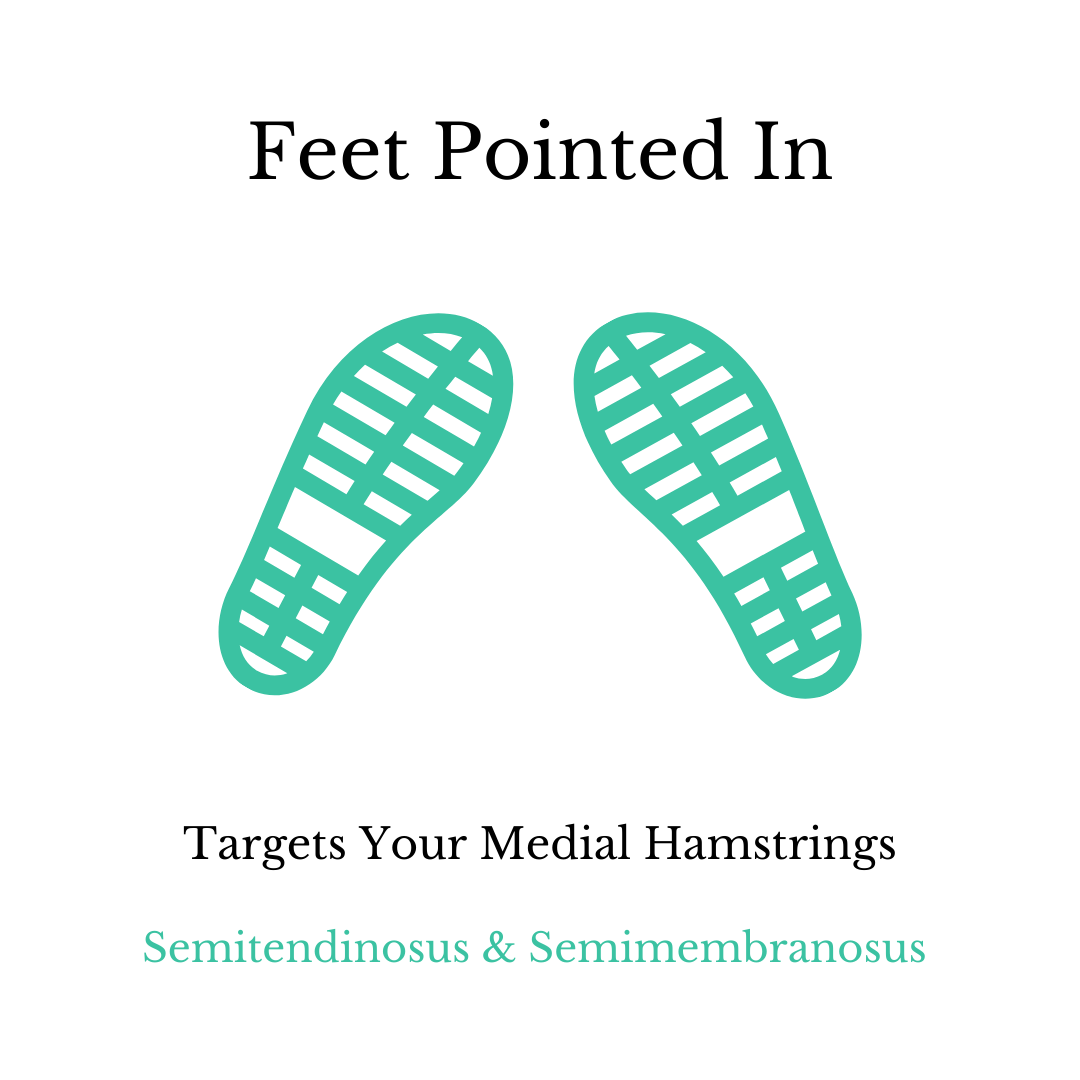You Foot Position Matters For Hamstring Curls
Have you ever been doing hamstring curls, and your calf muscles cramped up halfway through the set? What gives? Or, have you noticed your strength for this exercise varies every time you go to the gym? Wanna know what’s up?
Your hamstrings are actually made up of 3 muscles, and all 3 cross the hip and the knee making them hip extensrs AND knee flexors.
When you do hamstring curls, you are training the knee flexion function of the muscle, which is what makes it an excellent exercise for your hams!
There are a few ways you can incorporate knee flexion into your routine including nordic curls and glute-hamstring raises, BUT the most common way you’ll see at the gym is with a hamstring curl machine. You may see a few options: lying, seated or standing, but no matter what type of equipment your gym has, your foot position matters regardless!
Let’s dive in!
First we’ll cover the two ways you can orient your feet in the vertical plane.
You can point your toes towards your body. This is called dorsiflexion. When you do this, you will be able to move heavier loads because your hamstrings have some help from your calf muscle, which is also a knee flexor! This is also why your calves may cramp up during the exercise - they’re working too hard to meet the demand (and likely compensating for a weakness in your hammies).
The second position is pointing your toes away from your body. This is called plantarflexion (think about planting your toes into the ground when you stand on tippy toes). This position will challenge your hamstrings much more because your calf muscle is busy pointing your feet, and no longer assisting knee flexion. I highly recommend doing this to build your hamstring strength!
Now that you’ve got that down, let’s get into horizontal foot positions:
First up is neutral! Just keep your feet parallel to one another. This one doesn’t bias one muscle over the other, so it’s great for overall hamstring development.
Next is feet turned out. This position favors your lateral hamstring (Biceps Femoris) because turning your feet out allows that muscle to contract a little bit more.
Alternatively, you can turn your feet in. This position biases the medial hamstrings (Semitendinosus and Semimembranosus) because it allows those muscles to contract just a little more.
All of these combined gives you 6 different combinations you can train, which allows you the ability to target and strengthen specific weaknesses. Be strategic about your choice, and stick with it for 3-4 weeks at a time!
You must also be strict about adhering to the chosen position for every rep of every set during those 3-4 weeks. Cheating the reps is only cheating yourself. Like I said, you will be stronger in some positions and weaker in others! It’s normal and to be expected!
Being conscientious about your foot position will also allow you to more accurately compare your hamstring strength over time (read - more PRs for you!).
When it comes to getting better and constantly improving the details matter! Hopefully now you can see why being willy-nilly about foot position is leaving gains on the table.
Remember - strong hamstrings = peachy booty!







